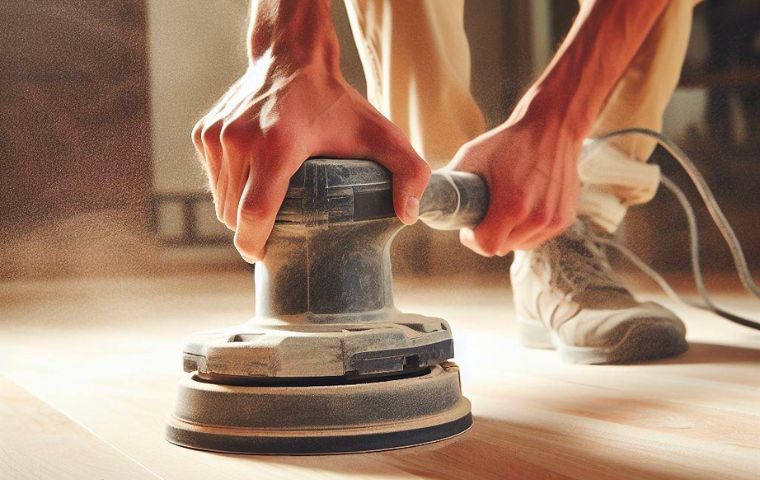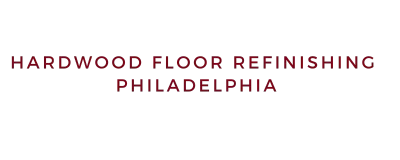How Much Does it Cost to Screen and Recoat Hardwood Floors?

Have you looked at your tired, worn hardwood floors and wondered, “How much does it cost to screen and recoat hardwood floors?” While dinged up, scratched floors can make a room look dated and dull, a fresh screening and recoating can give them back their beauty.
Prices range for screen and recoat widely based on square footage, condition, and who does the work. In this guide, we’ll break down everything you need to know about budgeting for hardwood floor screening and recoating costs.

How Much Does it Cost to Screen and Recoat Hardwood Floors?
As a rough estimate, the cost for only screening and recoating hardwood floor can be anywhere between $3.5 and $6.5 per square foot without staining. That cost also accounts for both labor cost and material cost. The cost for staining of hardwood floors is determined separately after analyzing the condition.
Ready to transform your floors? Get a FREE On-Site Estimate from our experts!
We’ll provide a detailed cost breakdown so you know exactly what to expect. No obligations, just professional advice!
We serve nationwide in all cities. Call us now, toll-free!
Call Now: +1 (877) 417-3933 Get Your Free EstimateFor full refinishing of your hardwood floors with sanding process, you can check out out free hardwood floor refinishing calculator. If you opt for complete hardwood floor refinishing process, the cost can range from $5 to $12 per square foot. It includes labor cost, material cost and extra services’ cost as well.
The cost of screening (also known as buffing) and recoating hardwood floors can vary significantly depending on various factors such as:
- The size of the area you’re treating. Generally, you pay per square foot.
- The condition of your floors. Floors with significant damage might need more extensive work.
- The rates charged by your chosen professional. Costs for labor and materials can vary significantly by region and company.
- The type and quality of the finish you choose.
- Number of coats for finish you require.
How Screening Hardwood Floors Is Different From Sanding?
Screening entails a light abrasion of the surface of the wood floors to degloss and create a rough texture on the existing finish. Unlike sanding, screening won’t strip the finish down to the bare wood.
We utilize mesh abrasive pads or screens attached to a weighted floor buffer machine for screening. This machine spins in a circular motion across the floor, effectively abrading away the top layer of the finish. This allows a new coat of polyurethane or another finish to bond more effectively.
With our screening service, we maintain the existing patina and color of your hardwood flooring, unlike sanding, which exposes fresh, bare wood. However, it’s important to note that screening does not address deeper scratches or damage in the wood itself.
We also offer a sanding service, which involves using a drum sander machine and edger to effectively sand off the old finish across the hardwood floors. In this process, we use a variety of sandpaper grits, typically starting with coarse 36-60 grit and working our way up to 80-100 grit for a smooth, refined surface.
When conducting sanding, we ensure a thorough cleaning between changing grits; removing and vacuuming dust is crucial in this process. Our meticulous approach is aimed at ensuring optimum results on your hardwood flooring.
When is Screening Of Hardwood Floors Recommended?
At our hardwood floor refinishing company, we recommend the screening process under the following circumstances:
- When the existing finish is generally in good condition, suffering from minimal deep gouges or stains.
- If your desire is to maintain the current color and patina of an older floor.
- In circumstances where a quick turnaround time is required, such as when preparing a house for sale.
- If the task at hand involves recoating a floor previously finished with polyurethane or another modern finish.
- In situations where you prefer to avoid the mess and dust associated with full sanding.
In essence, we propose screening as an ideal solution for reviving floors that are already in good shape but simply need a new protective layer of finish. This method may not be as effective for floors requiring extensive repair.
When is Sanding Of Hardwood Floors Recommended?
At our hardwood floor refinishing company, we recommend considering a full sanding down to bare wood in the following situations:
- Damaged or uneven finish: When the existing finish is badly damaged, stained, or uneven, starting fresh with bare wood is the ideal solution.
- Changing floor color: If you desire a different color for your floors compared to what you currently have, full sanding allows for a clean canvas to apply the desired stain.
- Incompatible finishes: If the current finish is old shellac, lacquer, or varnish that won’t adhere well to new polyurethane or water-based finishes, opting for full sanding is necessary.
- Removing gloss inconsistencies: When there are noticeable gloss inconsistencies that you want to eliminate, sanding the floors entirely provides an even, smooth surface.
- Investing time for refinement: If you’re willing to invest the time and effort for a comprehensive refinishing job, sanding offers the most extensive customization options, allowing you to fully personalize the color and appearance of your floors.
Although full sanding provides a uniformly smooth surface and ample customization possibilities, it requires expertise and generates a significant amount of dust and mess during the process.
Do You Really Need Screen and Recoat?
At our hardwood flooring care service, we highly recommend considering screening and recoating for your hardwood floors.
By lightly sanding the existing finish to remove scratches and preparing the surface, followed by the application of 1-2 new coats of polyurethane, we can refresh your floors and significantly extend their lifespan.
This process proves to be a cost-effective solution that can postpone the need for a full sanding for several years. However, it’s important to note that screening alone, without the recoating step, will only leave your floors looking worn.
When should you opt for screening and recoating? If your polyurethane finish has minor scratches, dull spots, or slight wear, but is still well adhered and water beads up on its surface, then this is an ideal solution.
Through light sanding, we remove the top layer of damaged finish without reaching the bare wood, which is typically required in full refinishing. It’s essential to ensure that the recoating uses the same type of finish (oil or water-based) as the original.
For optimal results, screening and recoating work best on site-finished floors with thin poly layers. However, it may not be as effective on factory-finished floors with thicker, baked-on finishes. In such cases, we advise conducting an adhesion test first to determine compatibility.
In the case of engineered wood floors, it is crucial to consult the manufacturer’s recommendations and perform an adhesion test spot before proceeding with full screening, as the thin veneer can be susceptible to damage.
Similarly, thin solid wood floors have limited material to work with, so screening may penetrate the finish layer. In these situations, alternative options like hard wax oils or micro-coating should be considered.
If your floors exhibit deep scratches, gaps between boards, cupping, or other significant issues, we recommend opting for full refinishing. This comprehensive process allows us to level and repair the wood itself, addressing these concerns effectively.
Screening alone cannot resolve such problems. Likewise, if the finish is extensively worn, peeling, or no longer providing adequate protection to the wood, a full sanding is the more suitable choice.
At our hardwood floor servicing company, we have the expertise to guide you in making the right decision for your hardwood floors, ensuring they receive the care they deserve.
How Much Time Does It Take To Screen and Recoat Hardwood Floors?
The time it takes to screen and recoat hardwood floors depends on several factors. Most surface finished floors require 24-48 hours before light foot traffic is allowed. Furniture should not be slid across the floor, but can be placed after 48 hours or as recommended by the finish manufacturer.
Area rugs can be put down after the finish has fully cured, usually 7-30 days. Allow 2 hours drying time between coats of finish. High humidity above 70% will extend dry time 1-4 hours. We also need to screen after the first coat with 120 grit mesh screen to remove any raised wood fiber.
Do not allow more than 8 hours between coats or screening between coats will be required. No more than 2 coats should be applied within a 72 hour period. The first coat of finish should not be allowed to dry more than 6-8 hours before the second coat is applied.
Proper drying times are critical to ensure proper adhesion between coats and avoid issues like clouding or hazing. Following the manufacturer’s recommendations for recoat windows, humidity levels, and cure times is important for a successful and durable finish.
Importance of a Protective Coat for Hardwood Floors
Here are reasons why a protective coat is important for hardwood floors:
- Durability: A protective coat can help to increase the lifespan of your hardwood floors by preventing scratches, dents, and other types of damage.
- Water resistance: A protective coat can help to make your hardwood floors more resistant to water damage, which is especially important in areas like kitchens and bathrooms.
- Stain resistance: A protective coat can help to prevent stains from setting into your hardwood floors, making them easier to clean and maintain.
- UV protection: A protective coat can help to prevent your hardwood floors from fading or discoloring due to exposure to sunlight.
- Easier maintenance: A protective coat can make your hardwood floors easier to clean and maintain, as it can help to prevent dirt and debris from getting ground into the wood.
- Improved appearance: A protective coat can help to enhance the natural beauty of your hardwood floors, making them look more polished and refined.
- Increased value: By protecting your hardwood floors, you can help to increase the value of your home, as potential buyers will be more likely to appreciate the quality and durability of your flooring.
- Reduced noise: A protective coat can help to reduce the amount of noise that your hardwood floors make when you walk on them, which can be especially important in multi-story homes.
- Improved air quality: A protective coat can help to prevent dust and other allergens from getting trapped in your hardwood floors, which can help to improve the air quality in your home.
The protective coating on your hardwood floors is like a thin plastic shield. It bears the brunt of dirt, scuffs, and wear from feet. This thin barrier protects the wood from damage. That’s why maintaining the finish matters.
Get it reapplied every 5 years or when you see scratches and dull spots. Renewing the coating preserves your floors’ beauty. Taking this simple step keeps your hardwood floors looking their best for years to come.
